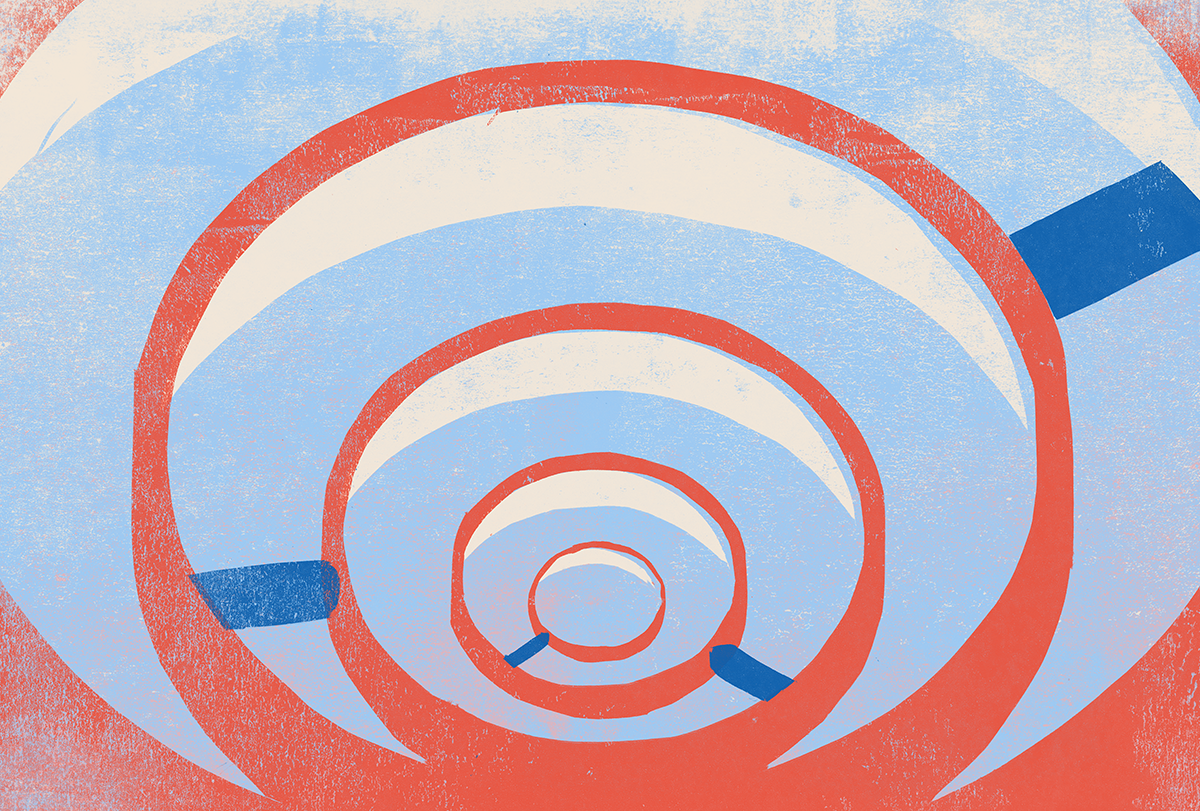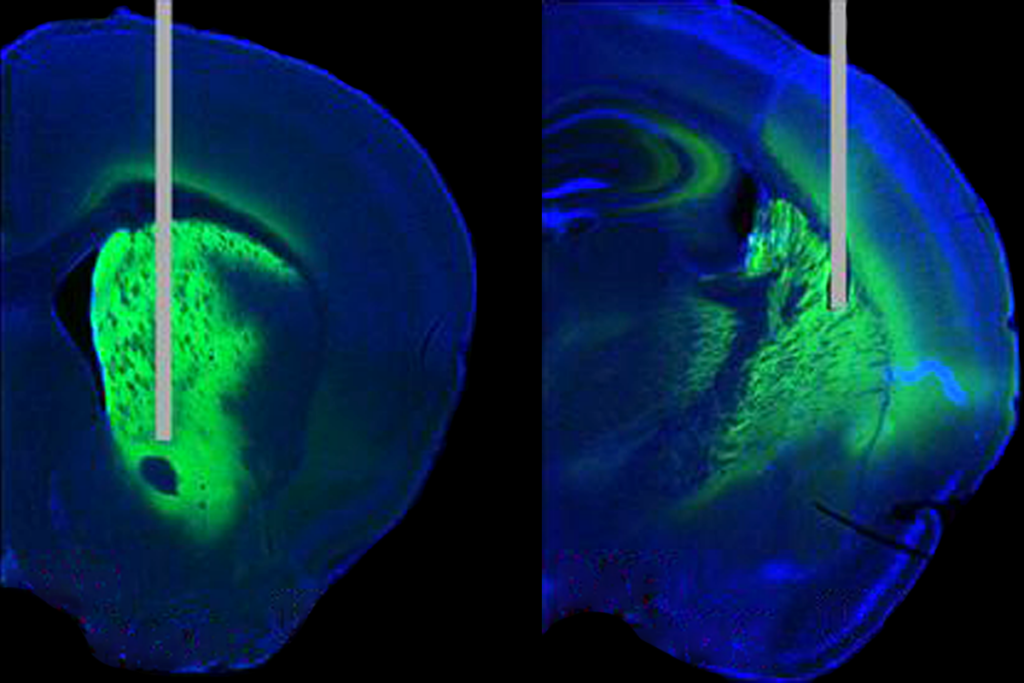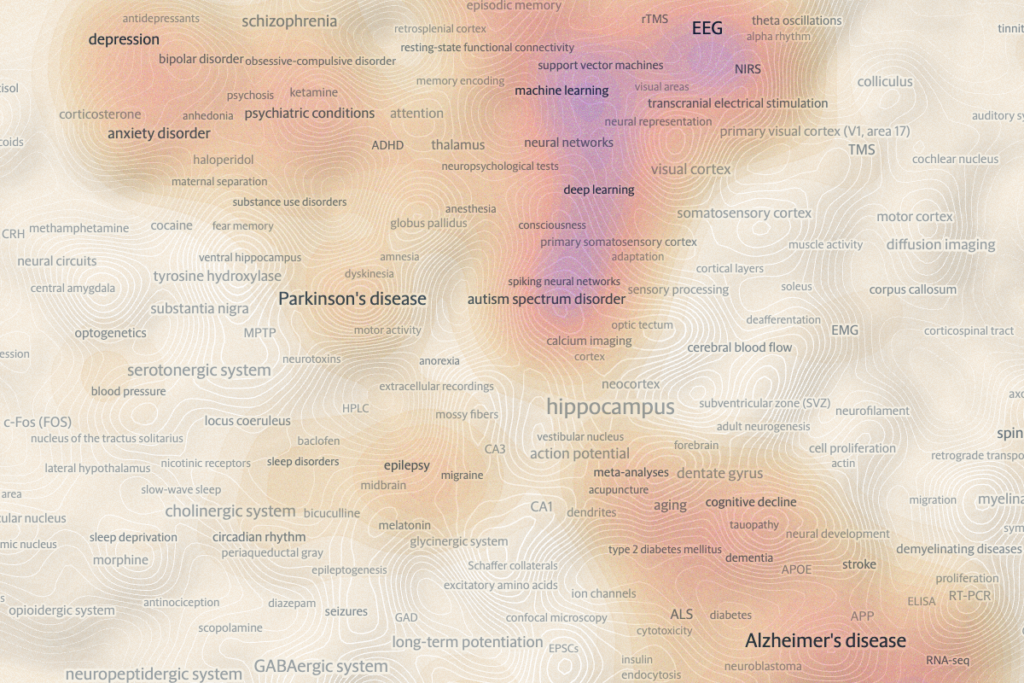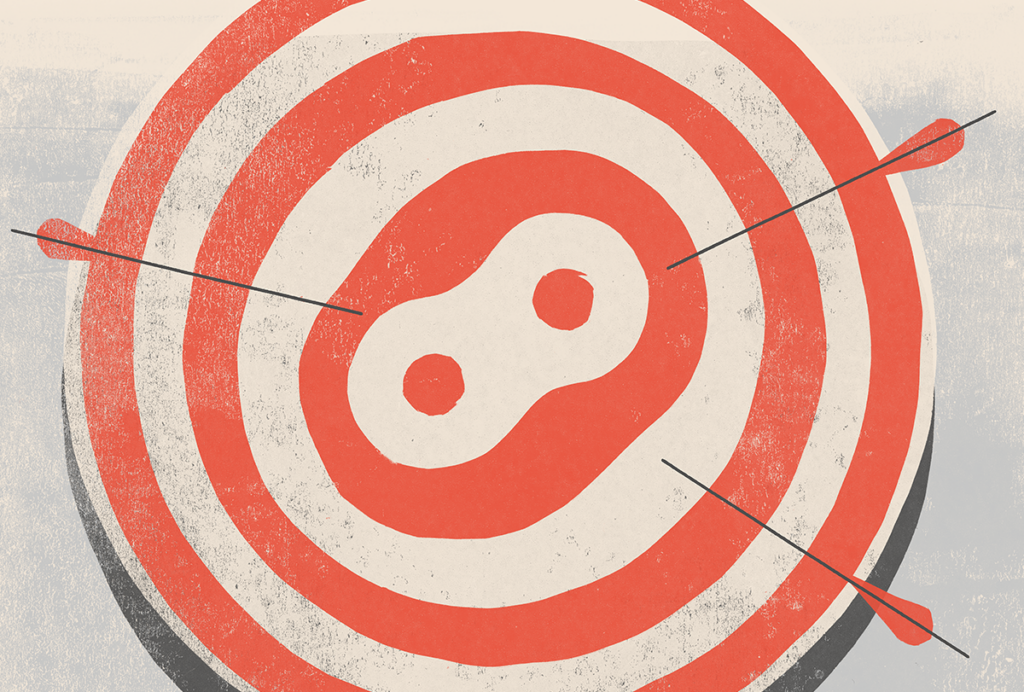“The jury remains out on Neuropixels recordings and what that can teach us. It may be an unpopular opinion. When I was in graduate school we would have 10 cells, now we have 10,000. That sounds like a lot, but it’s a small fraction of the mammalian brain. Does recording from an order of magnitude more cells teach us something new, or just rigorously confirm what we already knew? I’m skeptical. I’m more excited about the comprehensive recordings of things happening in brain and behavior. Ten thousand cells is a small fraction, but if technology can enable us to record calcium imaging from the entire cortical surface, that will allow us to do new things.”
—Bing Wen Brunton, professor of biology, University of Washington
“I’m quite excited about three-photon imaging in awake animals. Imaging deep in the cortex, with a spatial and temporal specificity we in MRI can only dream of. Maybe it can help us better understand how neurovascular coupling shapes the fMRI signal. In (f)MRI, the last five years has seen steep increase in the number of receiver channels and gradient performance, translating into faster and higher resolution imaging. Looking at the next five years, I’m excited to see the development of simultaneous transcranial ultrasound and fMRI, to non-invasively modulate the ‘circuitry’ and see how the activity changes. Of course, I should also mention the development higher magnetic field strengths, such as the 14 Tesla human MRI system in the Netherlands.”
—Martijn Cloos, associate professor of bioengineering, University of Queensland
“Brain expansion. So, this is the idea that you put these polymers into tissue and then when they’re exposed to appropriate solvents, they expand. What you can do is take tissue and expand it 10 times larger, and this allows you to image things with a standard microscope instead of having to use, say, an electron microscope. That was one thing that was a pretty big deal. But what really got learned there is that you can create this molecular scaffold inside of tissue and you can scaffold all manner of molecules to it. Many techniques can thus get better. You can effectively scaffold all the RNAs in situ into this embedded polymer, and it’s dramatically improving detection and imaging of nucleic acids. In general, many techniques continue to improve as the field learns how to work with the chemistry of these polymers better. Histology has always been important in neuroscience. Expansion, or really embedding tissue with an amenable molecular scaffold, has pretty well revolutionized histology in my opinion.”
—Joshua Dudman, senior group leader, Janelia Research Campus, Howard Hughes Medical Institute
“Miniscopes, one-photon miniscopes, but also now two-photon miniscopes, which allow us to record calcium dynamics from individually resolved neurons in behaving animals.”
—Johannes Kohl, group leader, Francis Crick Institute
“Imaging in general has been transformative for neuroscience, no question. And some of the big innovation started sort of in the early ’90s with the evolution of MRI, and they just continue to explode in terms of what we can measure with imaging. All the way from, like, white matter, gray matter to now we’re getting to be able to measure calcium flow of cerebral spinal fluid in fast times, protein metabolism, things of that sort. All of those [imaging] techniques really are giving us more detail and being able to break part of the system into smaller and smaller bits but getting the collection of the whole. So, you have the entire brain being measured for blood flow or the entire brain being measured for calcium, for example. So, it’s giving us access to data that we never had even thought of having access to before.”
—Randy McIntosh, director, Institute for Neuroscience and Neurotechnology, Simon Fraser University
“Imaging. It has become more broadly used. This is two-photon imaging for many different applications. Also there have been new approaches to clear tissue to give better fluorescence imaging of the whole tissue; sort of not having to only look in one region or digitally slice it, you get the whole view of the tissue.”
—Steven Proulx, group leader, University of Bern
“The miniaturization of some of the optical components so you can do two-photon microscopy and see cells deep in the brain of a mouse while it’s running around, because they made the microscope 2 grams or something and it can fit on their head. Those parts have been pretty impressive.”
—Gregory W. Schwartz, professor of ophthalmology, neuroscience and neurobiology, Feinberg School of Medicine, Northwestern University





